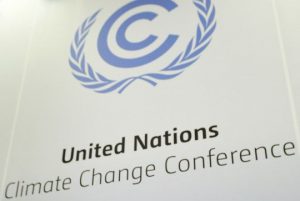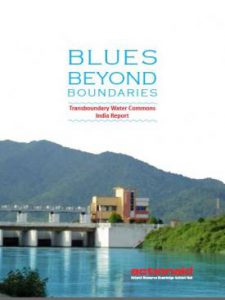A court in The Hague recently became the first in the world to order a state government to cut greenhouse gas (GHG) emissions, smoothing the path for similar moves in other countries.
The court found in favour of environmental NGO Urgenda, which had brought the case against the Dutch government based upon ‘hazardous state negligence’. The court said the Netherlands was in breach of its duty of care to Dutch society for failing to take sufficient measures to prevent dangerous climate change.
This decision could prompt similar climate litigation cases across the world and spur countries – particularly developing nations – to re-explore the prospects for cross-border legal action. The judgment is also timely, coming in the run up to the crucial UN climate negotiations in Paris in December. States failing to meet quantifiable reduction commitments will be open to potential lawsuits, ensuring that weak action to cut emissions could have major legal consequences.
Dutch decision
Up until 2010, the Netherlands had a national target for 2020 of reducing emissions by 30% compared with 1990 levels. The government accepted that national reductions of 25%–40% by 2020 were needed to effectively support the global aim of preventing temperatures rising above 2C, but the government only managed to deliver emissions cuts on a path of 17%.
The government did not argue that the scientific consensus had changed or that the original 30% target was economically unachievable. Instead, it said the state had no legal obligation to deliver deeper cuts. Dutch officials also claimed that allowing the case to go forward would mean the courts were straying into the policy sphere, which is the preserve of the government. The court rejected these arguments and ordered the Dutch government to reduce national greenhouse gas emissions by 25% by 2020.
The court also found that the judiciary had a clear role in addressing the threat of climate change. In public law litigation, the courts’ role is to protect citizens’ fundamental rights by determining the ‘lawfulness’ of state activities. Sometimes, however, it is difficult to appropriately separate the judicial role from the political, where questions concerning ‘a duty to protect’ are conflated with the issue of how that protection is be achieved.
But, in this case, the court acknowledged that climate change is different. A minimum standard of protection can be reduced to quantifiable terms, the percentage reduction, and separated from how that reduction is achieved –the policy issue. In doing so, the court has remained within the correct confines of its role, protecting rights but not creating policy.
Why this is so significant
The critical question now is whether or not the Urgenda decision will prompt litigation in other jurisdictions. Three points raised by the court in making the decision are particularly relevant to the potential for future cases being brought.
Firstly, the court dismissed the excuses for avoiding unilateral state action that have been part of the climate change discourse for so many years. The fact that GHG emissions were caused by third parties was deemed irrelevant: the government had the sovereign power to control emissions and so had ‘systemic responsibility’ within its territory.
The court said there was no evidence to support contentions of ‘carbon leakage’ in the Dutch context. This is the concept that companies impacted by GHG regulations would migrate to non-regulated countries. The judges also ruled that allowing the claim would not adversely impact upon the EU emissions trading scheme through what is called the ‘waterbed’ effect. This theory assumes that an achieved reduction in one country would be balanced with extra emissions in another country.
Secondly, the court also rejected the ‘but for test’ argument – the need to show that harm would not happen but for the actions of the defendant. This has always seen as a major hurdle to tort based litigation as there are multiple contributors to climate change. The court reasoned that the comparatively minor contribution of the Netherlands to global GHG emissions was inconsequential.
The court said in its judgement “any anthropogenic greenhouse gas emission, no matter how minor, contributes to an increase of CO2 levels in the atmosphere and therefore to hazardous climate change. Emission reduction therefore concerns both a joint and individual responsibility of the signatories to the UN Climate Change Convention”. This reasoning could lead to other negligence-based claims based upon the ‘Trail Smelter’ principle – states have duties to prevent activities within their jurisdictions that cause harm to the territories of other states.
Thirdly, although the success of the claim did not depend upon a breach of constitutional rights, Urgenda can be framed as a rights-based case. In many countries, the courts are seen as ‘last-bastion’ guardians for the protection of fundamental rights. Environmental destruction is now occurring on such a huge scale the world, as the Dutch Court put it, is facing “catastrophic consequences” that put the fundamental right to life at risk.
The acknowledgment of this fact by a court of law has the potential to re-invigorate rights-based jurisprudence particularly in developing nations. There have already been examples of action taken based on human rights, such as the successful Nigerian cases against polluting oil companies.
Growing tide of climate litigation
The Dutch case might contribute to a legalistic ‘sea change’. InClientEarth, R (on the application of) v Secretary of State for the Environment, Food and Rural Affairs [2015] UKSC 28 (29 April 2015), the UK Supreme Courtordered its government to comply with the limits in the European Union Air Quality Directive for nitrogen dioxide – an indirect GHG that isn’t covered by the Kyoto Protocol.
Critics might allege litigation constitutes an unsatisfactory, piecemeal approach to the climate problem when global consistency is required. But that assessment is simplistic and the Urgenda case could have significant indirect impacts. For example, government agencies, industry and the financial sector may have to re-assess the risk of litigation if they continue with a ‘business-as-usual’ approach to climate change.
More importantly, the Dutch case is an emblematic victory. After decades of inaction where the political branch has been unwilling or unable to protect fundamental rights, the judicial branch in the Netherlands has taken a stand. It has intervened to make the need to reduce GHG emissions apolitical, freeing the government from the shackles of ‘political palatability’, and forcing it to focus on policies required to safeguard life.






